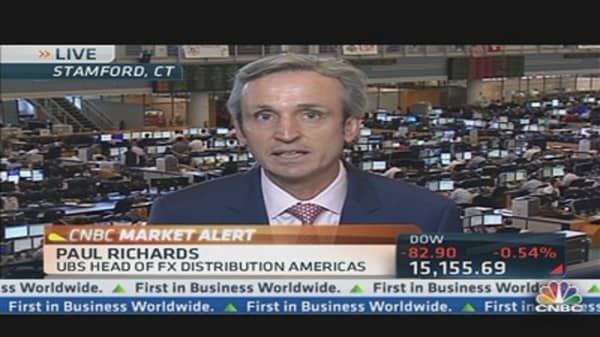The yen soared on Tuesday after the Bank of Japan decided not to announce additional measures to curb recent volatility in the bond market, spurring doubts about its commitment to easy money and causing steep losses in the Japanese stock market.
Japan's currency gained more than 3 percent to hit 95.60 yen per dollar after the BOJ held off extending the maximum duration of its fixed-rate loans. Some had expected it to stretch the duration to two years from one.
(Read More: Bank of Japan Keeps Policy Steady, Upgrades View of Economy)
This prompted investors to unwind some of the hefty bets against the yen they placed after the BOJ announced a $1.4 trillion stimulus program in early April. Japan's Nikkei index, with which dollar/yen has been closely correlated in recent weeks, closed down 1.5 percent.
(Read More: Dollar-Yen Shake-Out Could Just Be the Start)
The BOJ's restraint had a global impact as well, causing world equity markets, bond prices and commodities to slump as investors feared that major central banks are cooling their commitment to the money-pumping that has buoyed markets.
"The BOJ's announcement was not necessarily significant, but headed into the meeting there was some hope they would extend the lending terms and they disappointed on that end," said Vassili Serebriakov, foreign exchange strategist at Wells Fargo in New York.




